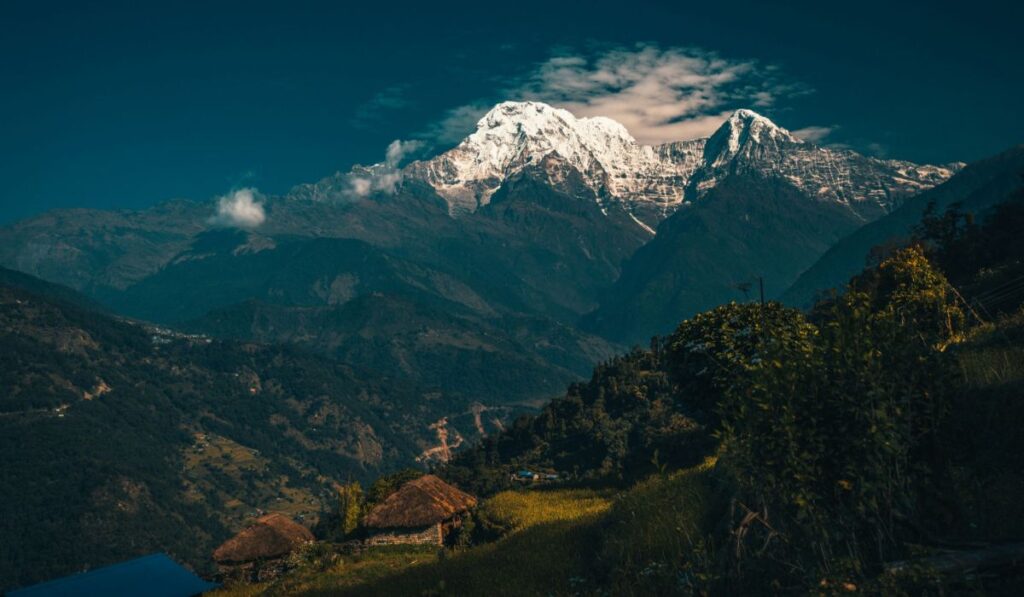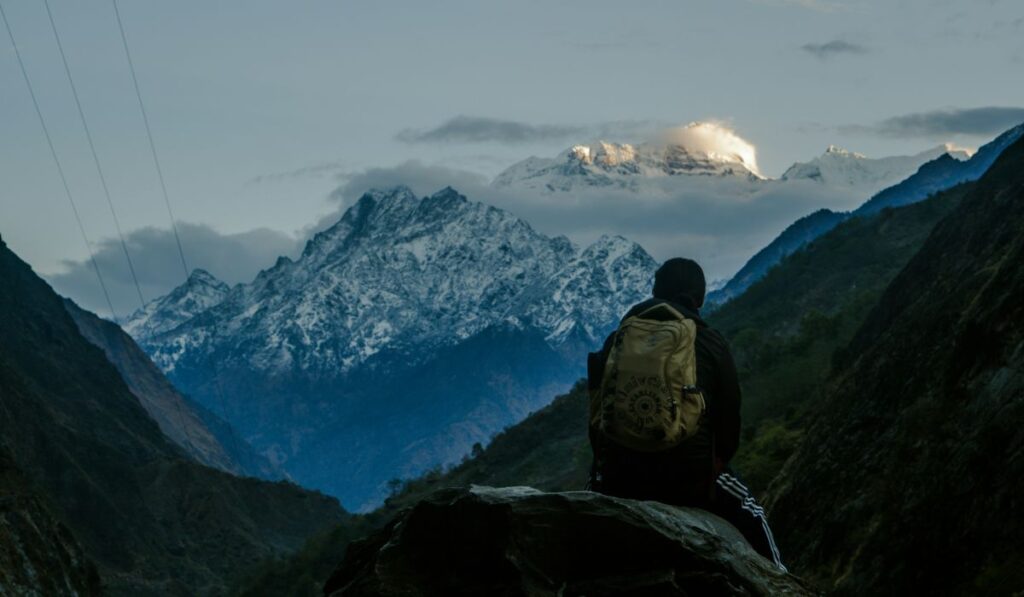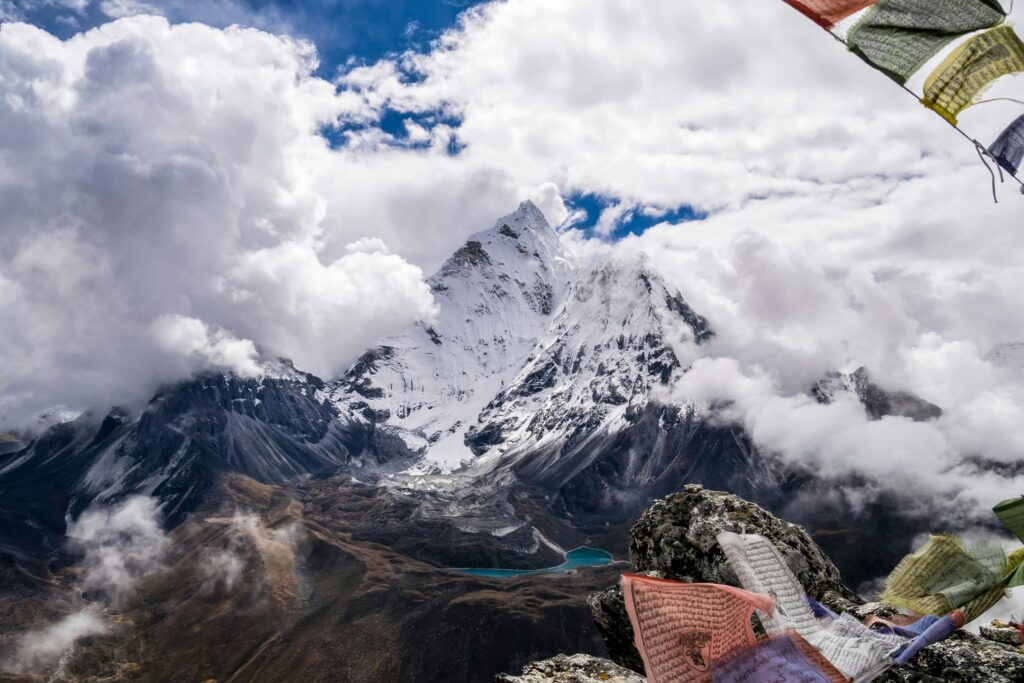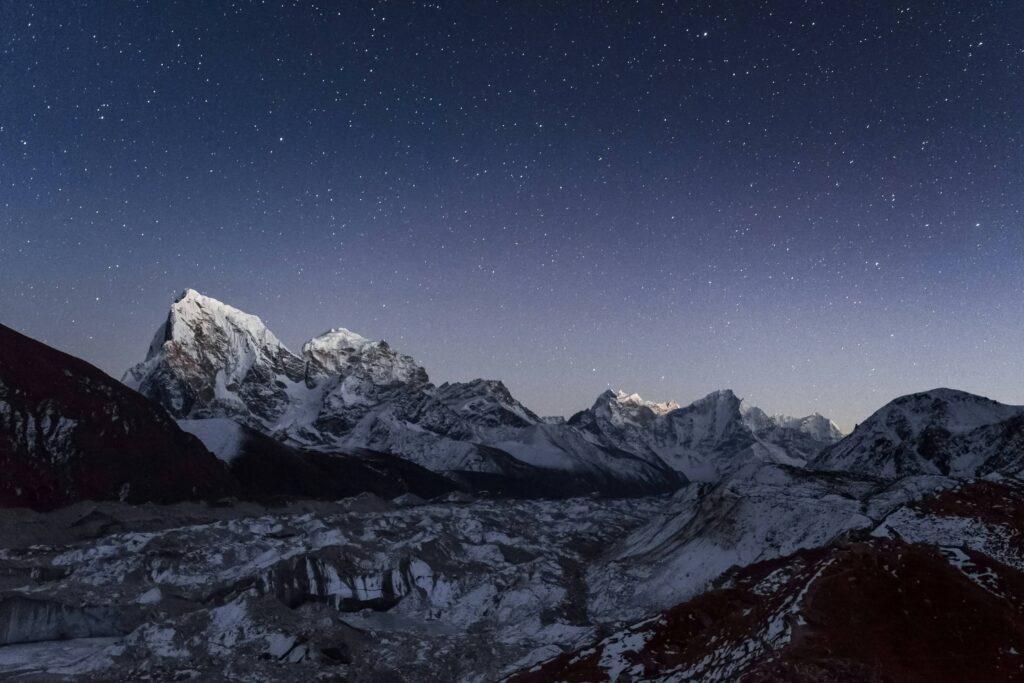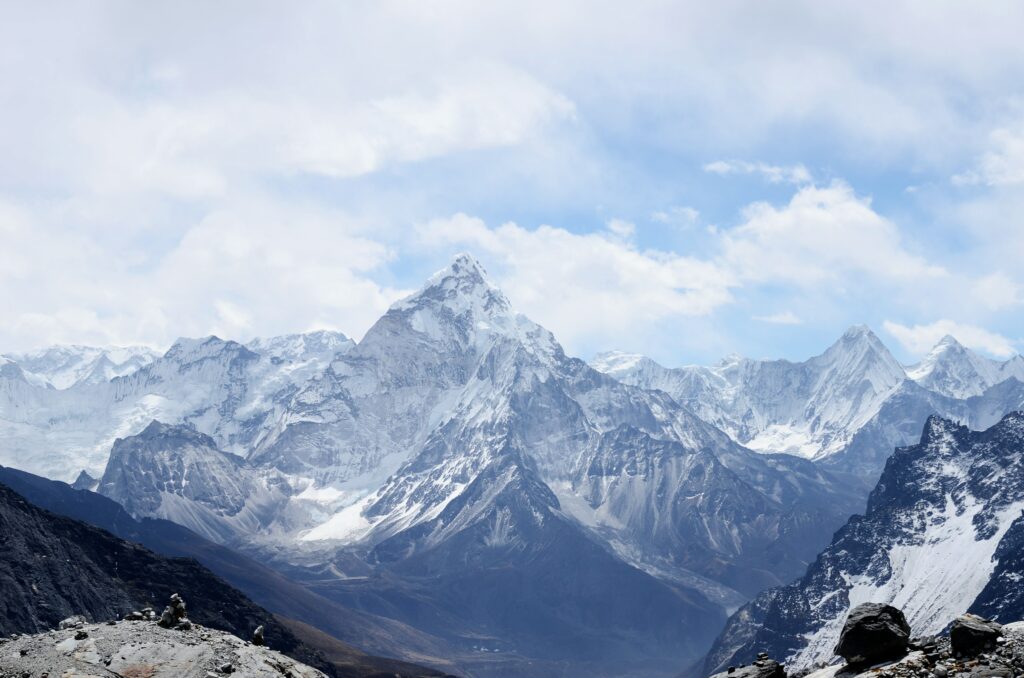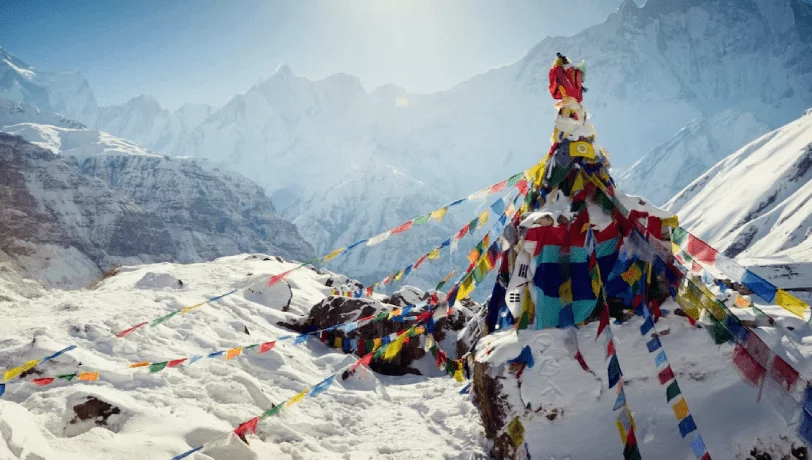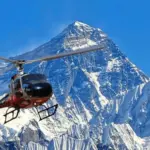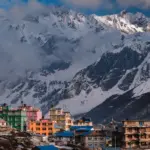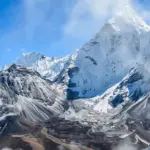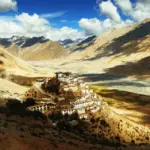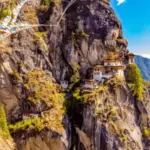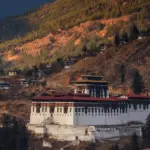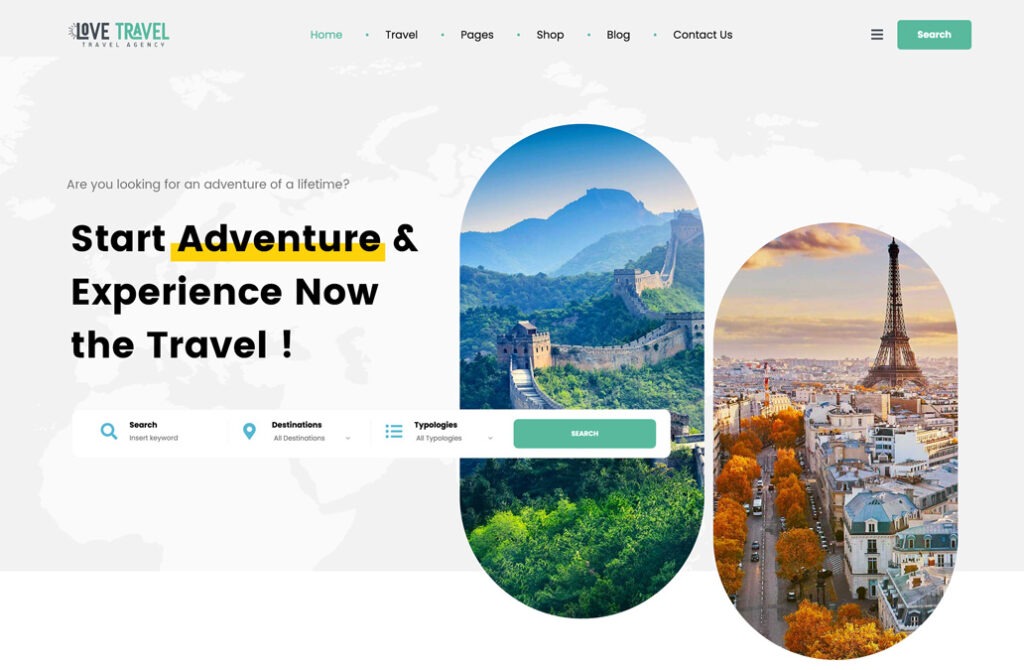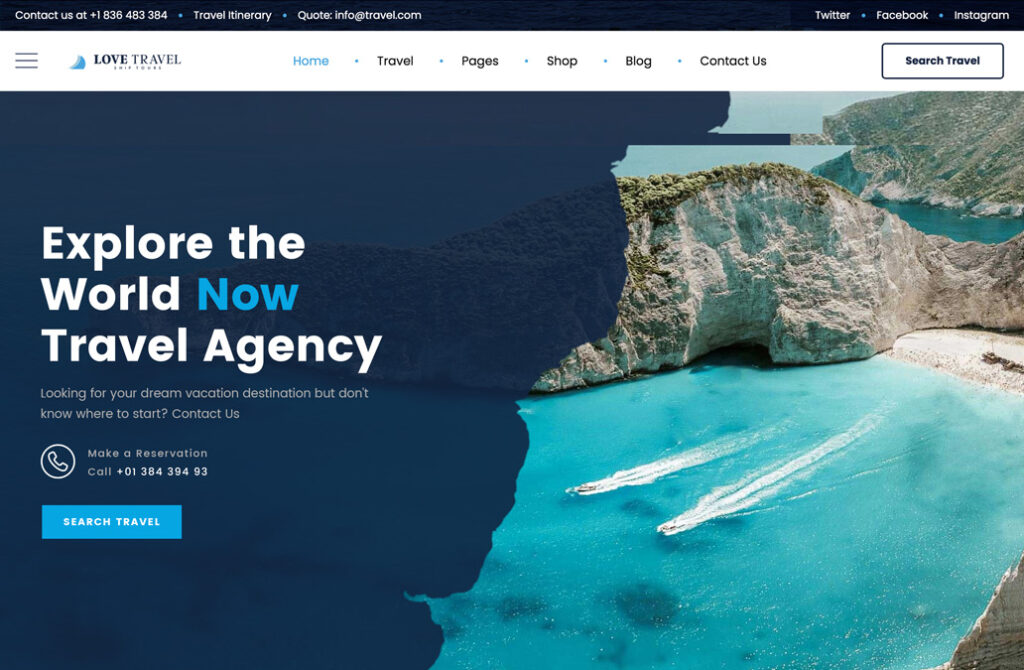Are you ready to get your taste in this 14-day Everest base camp trek with Island Peak?
Island Peak, also known as Imja Tse, stands tall at 6,189 meters. This peak isn’t just a pretty face but a thrilling challenge that welcomes climbers of all levels with open arms and (crampons!).
Trekking in the Everest region is like hitting the ultimate jackpot of trekking experiences!
Everest Base Camp with Island Peak Trek Facts:
Country: Nepal
Region: Everest/Khumbu Region
Activity: Trekking & Peak Climbing
Trek Difficulty: Challenging
Accommodation: Hotel & Tea Houses
Max Altitude: 6,189m
Min Person: 2
Meals: Standard (Breakfast, Lunch, Dinner)
Trek Overview
Strap in for a 16-day whirlwind adventure starting with a jaw-dropping flight into Lukla airport.
From there, you’ll ease into the trek, soaking in the vibes of Namche Bazaar before gearing up for the Island Peak climb. After a few days of acclimatization and training at the base camp, you’ll conquer the summit of Island Peak! With stunning views of Lhotse Shar, Makalu, Baruntse, and Ama Dablam greeting you at the top, you’ll feel literally on top of the world.
But it’s not just about the peaks and valleys.
This 14 days Everest Base camp trek is a feast for the senses. From walking past the Dudh Koshi River to crossing swaying suspension bridges and catching glimpses of rare wildlife like Himalayan Tahrs and elusive snow leopards, every step brings a new adventure.
Adventure you signed up for while booking this EBC with Island Peak trekking with us. Like our previous clients, you’ll create memories that you’ll rejoice for your lifetime. Our seasoned trekkers turned guides will help you every step of the way.
So, what are you waiting for?
Pack your bags and lace up your boots for a lifetime adventure in the Himalayas. Trek and Adventure Nepal offers more than just a trip – you’ll get to experience the thrill of trekking at the base of the world’s highest mountains and leave your footprints behind.
Now, let’s explore your itinerary for the next 14 days. Want to customize it? Sure, just fill out the form on the right.
Everest Base Camp with Island Peak Climb Difficulty
Climbing Island Peak presents a significant challenge, but reaching the summit is achievable with proper physical fitness.
Technical climbing skills are not required, but familiarity with crampons and ice axes is necessary. Prior experience trekking at high altitudes is beneficial for the Everest base camp trek with Island Peak. The ascent begins with strenuous trekking over rugged terrain at altitudes exceeding 5000m, followed by navigating glacier fields while roped up and wearing crampons to mitigate the risk of snow-covered crevasses.
Safety measures, including fixed ropes and ladders, will be in place for protection.
The steep ascent up the headwall is the most demanding section, requiring determination and the use of fixed lines for safety. However, the final ascent from the summit ridge to the top is relatively straightforward. This expedition is suitable for trekkers with some experience in high-altitude trekking and basic skills in using fixed ropes and crampons.
While prior experience is beneficial, training will be provided as needed.
For those seeking training advice or a tailored training plan, Kate Sielmann offers coaching programs specifically designed for mountaineering and trekking preparation. More information can be found on her website.
If the Everest base camp trek with the Island peak climb is a little too much for you considering your fitness level, you have other options. You can opt for our 12-day short Everest base camp trek adventure and make your journey to the Himalayas a holistic experience.
Island Peak with EBC Trek Accommodation
Trekking in Nepal has become increasingly popular, leading to significant improvements in accommodation along most trekking routes.
Large hostels have replaced traditional peasant huts, offering modern amenities such as running water, indoor toilets (some with en-suite facilities), and electricity. However, amenities like internet access, charging facilities, and hot water may come with an additional fee, averaging around $10 per day if used daily.
Despite improvements, accommodation standards vary as you ascend higher into the mountains, with lodges becoming more basic. Furnishings are minimal, and rooms often contain only bench beds and thin mattresses. Having your sleeping kit would be nice.
Showers may only sometimes be available, and heating is usually limited to communal areas.
Namche is an exception to this trek, which boasts several high-quality lodges like the Hil-Ten.
Food & Drinks
At lodges along the trekking routes, guests can choose their meals and settle their bills in the morning.
While meals at the lodges are generally affordable, budgeting around £20 to £25 per day for food and drinks to ensure a satisfying dining experience is advisable. Nowadays, lodge menus offer a diverse selection of over 40 dishes, ranging from simple options like dhal bhat to more elaborate choices such as yak steak with blue cheese sauce.
However, prices at the lodges we prefer may be slightly higher than simpler accommodations.
It’s recommended to place meal orders promptly upon arrival at the lodge. Service operates on a ‘first ordered, first served’ basis, especially at popular lodges where meal times can be busy.

